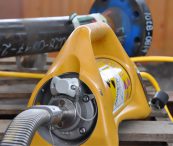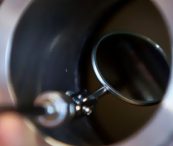Non Destructive Testing (NDT) is the branch of engineering concerned with all methods of detecting and evaluating flaws in materials without causing damage. Flaws can affect the serviceability of the material or structure, so NDT is important in guaranteeing safe operation as well as in quality control and assessing plant life.
Flaws may be cracks or inclusions in welds and castings, or variations in structural properties that can lead to loss of strength or failure in service. The essential feature of NDT is that the test process itself produces no deleterious effects on the material or structure under test.
ITIS provides highly skilled, experienced and motivated personnel qualified and certified in accordance with international certification schemes (e.g. PCN (EN 473/ IS0 9712), ANSI CP-189 and SNT-TC 1A) in the conventional techniques that have underpinned the NDT industry from its earliest days.
ITIS NDT services include but are not limited to the following:
Hardness Testing

Hardness is the resistance of a material to localized deformation. The term can apply to deformation from indentation, scratching, cutting or bending. In metals, […]
Magnetic Particle Testing

Magnetic particle inspection (MPI) is used for the detection of surface and near-surface flaws in ferromagnetic materials. A magnetic field is applied to the […]
Penetrant Testing

Apart from visual inspection this is probably the oldest and most widely used of all the NDT methods. It can be used on any […]
Positive Material Identification

Positive Material Identification (PMI) provides alloy Chemistry and grade ID information instantly using a handheld analyzer without having to move, alter, or damage the […]
Radiographic Testing

This technique contains the use of penetrating gamma or X-radiation to examine parts and products for imperfections. An X-ray machine or radioactive isotope is […]
Ultrasonic Testing

Ultrasonic Inspection is a non-destructive method in which beams of high-frequency sound waves are introduced into materials for the detection of subsurface flaws in […]
Visual Testing

Visual inspection is one NDT method used extensively to evaluate the condition or the quality of a weld or component. It is easily carried […]
